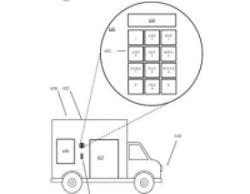Google awarded patent on self-driving delivery trucks
Google has been awarded a patent on self-driving trucks that would be able to deliver packages to a customer’s doorstep.
The patent filed by Google is for a truck that holds a number of individual lockers, each with its own unique identifier, which could be opened by customers with a pin code. The truck would be able to navigate to each location autonomously through a vision system, which according to the patent, would feature radar, video cameras, and LIDAR. By observing the roads and any potential traffic, the truck would be able to send a text to a customer if it’s going to be late.
As many of you may already know, Google is already working on driverless cars, having introduced its first driverless car to the streets of California in 2015. The car’s vision system also includes a LIDAR system (from Velodyne Lidar), as well as regular cameras mounted around the exterior of the vehicle in pairs to provide stereo vision.
Recent rumors (via Yahoo Autos) suggest that Google and Ford are set to collaborate on the development of autonomous cars.
"Google and Ford will create a joint venture to build self-driving vehicles with Google's technology, a huge step by both companies toward a new business of automated ride sharing," reports Yahoo Autos.
No official word has been seen on this, but Google is most definitely positioning itself to be an innovator in the field of autonomous vehicles, among other cutting-edge technologies.
Via Popular Science.
Image via United States Patent and Trademark Office.
Share your vision-related news by contacting James Carroll, Senior Web Editor, Vision Systems Design
To receive news like this in your inbox, click here.
Join our LinkedIn group | Like us on Facebook | Follow us on Twitter
About the Author

James Carroll
Former VSD Editor James Carroll joined the team 2013. Carroll covered machine vision and imaging from numerous angles, including application stories, industry news, market updates, and new products. In addition to writing and editing articles, Carroll managed the Innovators Awards program and webcasts.
